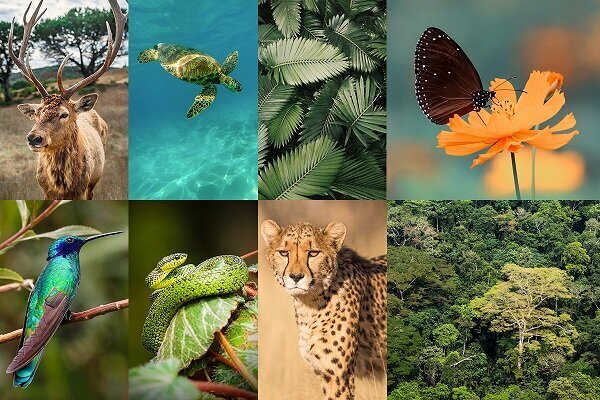DOE sets strategic goals for long-term biodiversity preservation

TEHRAN – The Department of Environment (DOE) has revised a comprehensive plan, setting its strategic goals for the conservation and sustainable use of biodiversity by the Iranian calendar year 1430 (March 2051-March 2052).
In May, President Masoud Pezeshkian issued an order, obligating the DOE to prepare a comprehensive plan for the preservation of biodiversity in the country, covering different environmental sectors.
In this line, several meetings have been convened with the participation of faculty members, environmental experts, and managers, as well as NGOs, IRNA reported.
During the meetings, the participants agreed on five main goals: promoting the integrity and resilience of biodiversity, conserving biodiversity for sustainable use, equitably sharing the benefits derived from genetic resources, raising public awareness, enhancing specialized knowledge, and modern technologies for effective biodiversity management, strengthening financial resources and national mechanisms for the implementation of the comprehensive strategic plan for biodiversity.
Finally, the national biodiversity conservation program will be revised based on the national biodiversity strategies and action plan (NBSAP3) by relevant executive agencies, academic experts, and non-governmental organizations, to be approved by the DOE.
Preserving endangered species
According to the latest report by the International Union for Conservation of Nature (IUCN), some 154 species of Iranian vertebrates are critically endangered of extinction.
Iran is a rich country in terms of biodiversity, with about 37,500 animal species and more than 8,000 plant species. In addition, it is home to 579 bird species, 214 mammal species, 284 reptile species, 23 amphibian species, 309 freshwater fish species, and 763 marine fish species in the Persian Gulf, the Sea of Oman, and the Caspian Sea.
Also, some 35,283 species of invertebrates have been identified in the country, out of which more than 32,600 species are arthropods. Over 94 percent of the country’s animal species diversity belongs to invertebrates and less than 6 percent to vertebrates. Insects, with at least 26,800 species, account for more than 70 percent of the country’s total species.
The Asiatic cheetah and the ostrich, whose numbers in nature have dropped to less than 25, are among the critically endangered species. Moreover, there are 5 species of Caspian sturgeon, unique in the world, that are disappearing from the Caspian waters.
According to experts, species extinction is a natural phenomenon, but the speed at which they are disappearing is concerning. Unfortunately, the current rate of extinction has accelerated in the present era due to human activities; it will have serious consequences for ecosystems and the well-being of the planet.
Referring to the country’s biodiversity, Hamid Zohrabi, an official with the DOE, stated, “Sadly, the unsustainable exploitation of biological resources has affected and disrupted ecosystems in several areas.”
The official made the remarks on the occasion of World Biodiversity Day, celebrated annually on May 22.
The DOE is in charge of the Convention on Biological Diversity. The convention’s three main objectives include conserving biodiversity, promoting sustainable use of natural resources, and equal sharing of biodiversity benefits, he said.
The realization of these goals requires local communities’ participation. Environmental protection needs to be sustainable, and it has to consider social and economic factors in planning, the official noted.
In terms of water resource management, as one of the most important ecosystems in preserving biodiversity, the situation is not favorable.
Almost a large part of the country’s wetlands have dried up. Many rivers have either dried up or become seasonal rivers, which has effectively caused these ecosystems to lose a large part of their biodiversity preservation functions.
Forest ecosystems are also in very unstable and unsuitable conditions. The forest ecosystems are degrading due to numerous reasons, such as fires and uncontrolled livestock grazing. This has caused pests and diseases to dominate the ecosystem. Soil erosion has increased with sand and dust storms becoming more prevalent.
The first meeting on the development of the strategic plan for the preservation of biodiversity in the country has been held with the participation of experts, and will go on till the plan is finalized, Zohrabi noted.
MT/MG
